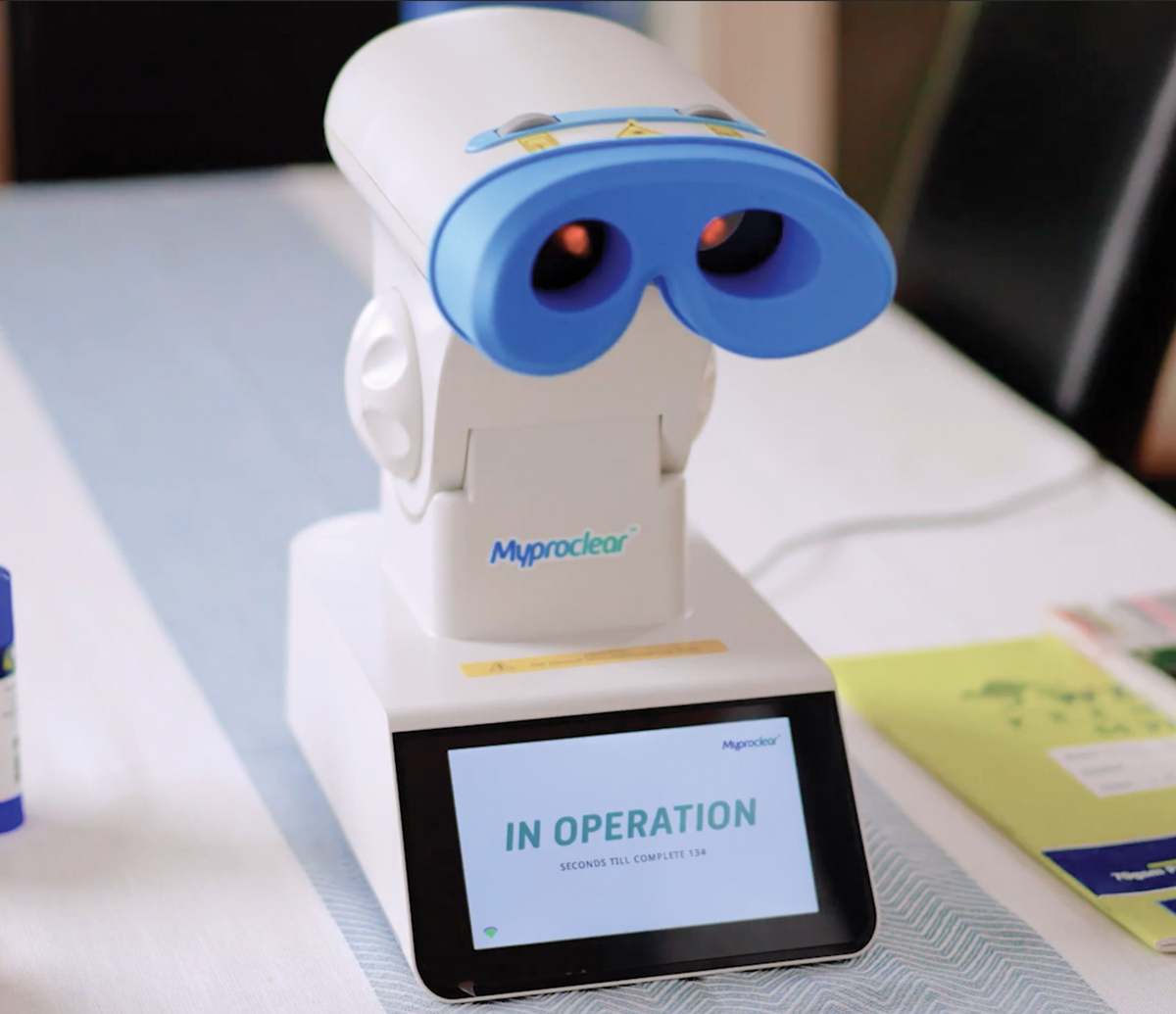 |
|
Over the two-year trial period, 85 percent of subjects fully adhered to their treatment regimen of either orthokeratology alone or a combined therapy of ortho-k with low-level red light. Photo: Eyerising International. Click image to enlarge. |
Many factors can influence the effectiveness of orthokeratology (ortho-K) in myopic children, including pupil size as well as the progression rate and severity of the patient’s refractive error. In severe cases, children respond poorly to ortho-K and experience overactive elongation of their axial length (AL). To prevent this in ortho-K nonresponders, physicians can employ other common myopia management techniques. For example, researchers from the Sun Yat-sen University in China investigated the effect of combining ortho-K with repeated low-level red-light (RLRL) therapy to help limit AL growth in patients struggling with their initial treatment. The treatment, while popular in Asia, is not yet approved in the US but does garner much attention as a potential future option worth understanding.
This study analyzed children’s responses to ortho-K over a two-year period. Subjects were treated in 2020, and once enough patients poorly responded to the treatment after one year, the researchers began the next phase of their trial. A total of 100 children presented with an axial elongation of ≥0.30mm during the first year of the trial. Then for the second year, the children were divided into two groups and either continued ortho-K treatment alone (n=45) or began combined therapy with RLRL (n=55).
“In phase two, axial elongation continued in the ortho-K monotherapy group, while a significant axial shortening was observed after 12 months of combination with repeated low-level red light in the combination group,” reported the researchers in their study, published in Journal of Ophthalmology. At the beginning of the second year, both groups presented with similar mean axial elongation results (0.45mm and 0.43mm, respectively). After a year of treatment, the monotherapy group demonstrated a mean AL elongation of 0.30mm while the combined therapy group’s mean annual AL change was -0.10mm.
In addition to the researchers’ findings on axial length differences between each group, some patients in the combined therapy group experienced notably better results than others. Annual rates of AL change of -0.05mm/year or more were seen in 63.6% of patients while 5.4% achieved reductions of as much as -0.4mm/year. “The variation in axial shortening between studies may be attributed to differences in participant demographics. It appeared that elder age was significantly related to slower axial elongation after combination therapy, which was consistent with previous published studies regarding RLRL,” they wrote.
It is important to note that this study focused on participants with progressive myopia, whereas other RLRL studies did not specify the rate of myopia progression, the researchers emphasized in their paper. “Furthermore, it has been hypothesized that ortho-K induces relative peripheral myopic defocus on the retina by altering corneal peripheral refraction, thereby reducing the stimulus for eye elongation,” they explained. “The combined impact of these two treatments could potentially lead to a more substantial reduction in axial length.”
They concluded that the study “indicated the potential combination of repeated low-level red light in children with rapidly progressing myopia with ortho-k and no documented functional or structural damage,” while noting that “further studies are needed to determine the long-term efficacy and safety in clinical practice.”
Yu M, Tang X, Jiang J, et al. Axial length shortening after combined repeated low-level red-light therapy in poor responders of orthokeratology in myopic children. Journal of Ophthalmology. August 10, 2024. [Epub ahead of print]. |


